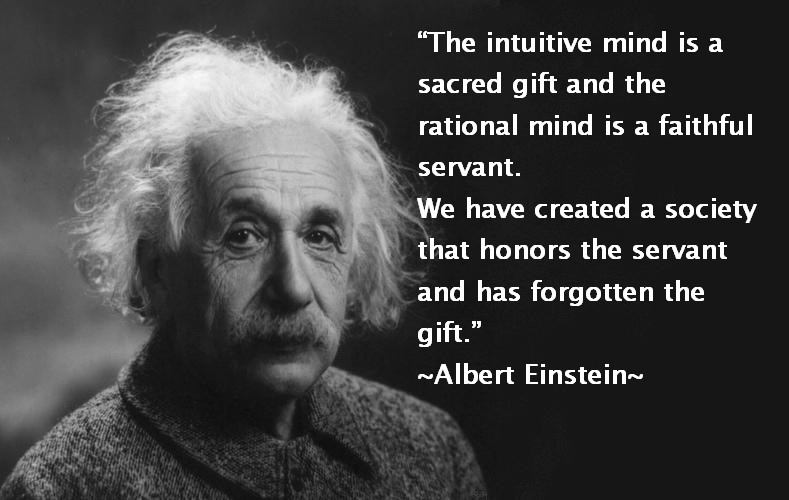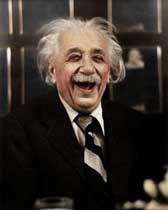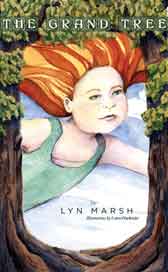
Einsteins companions are listed chronologically according to date of blog post
When he was 16 years old, Einstein imagined what it would be like to ride alongside a light beam. And 10 years later, helaid the foundations for the two great advances of twentieth-century physics: relativity and quantum theory. One of the most beautiful theories in all of science, the general theory of relativity emerged from his effervescent cauldron of imagination, yet a decade later.
Walter Isaacson described Einstein’s unprecedented transformative influence in [his beautifully distinctive book] Einstein:
He became a scientific supernova and humanist icon, one of the most famous faces on the planet.
Descriptions of Einstein’s companions in the afterlife are listed below. They are discussed in the order that they appear in the blog posts.
 Kurt Godel
Kurt Godel
Palle Yourgrau most elegantly described Kurt Godel in his book, A World Without Time, when he wrote, “He was…the greatest logician of all time, a beacon in the intellectual landscape of the last thousand years, and the prey he sought was not American ships bound for Britain but rather the so-called continuum hypothesis, a conjecture made by the mathematician Georg Cantor about the number of points on a line.”
Kurt Godel was born on April 28,1906 in the Czech Republic. He died on January 11, 1978, in the Princeton Hospital from malnutrition.
In 1927, at age 21, Gödel met dancer Adele Nimbursky (née Porkert), in the Viennese night club, Der Nachtfalter (The Moth). Because Adele had been married and was six years older than Kurt, his parents disapproved of the match, and it was not until the autumn of 1938 that Kurt and Adele were married. They seemed by all accounts, to be supportive and caring with one another, and Adele was at the heart of the very few people that Godel trusted in his life. Einstein was another person, and possibly the only other one, besides his mother.
Godel’s incompleteness theorem was described in a ceremony at Harvard University, as ‘the most significant mathematical truth of the century’. It proposed that the complete set of mathematical truths will never be captured by any finite or recursive list of axioms that is fully formal. Another words, no computer will ever be able to exhaust the truths of mathematics.
Godel showed that not only was truth not fully representable in a formal theory, but also that ‘consistency’, too, could not be formally represented. So Godel had proved that there was in principle no method by which a mathematician, regarding his theories, could prove them free from hidden inconsistencies. This blew away one of the most prominent mathematicians of his times, David Hilbert. Hilbert’s formalism was a crowning achievement of positivism, which was the most articulate and well-developed attempt to prove once and for all that the very foundations of mathematics, from Plato, could be sidestepped. Wittgenstein, the patron saint of an elite group of physicists in the Vienna Circle which espoused positivism, declared that only real facts are of the empirical variety. Godel then proved that there exists no such thing as a mathematical fact.
Godel and Einstein became close friends at the Institute for Advance Study in Princeton. They talked endlessly, mostly on their long walks home from the Institute. While Einstein liked Beethoven and Mozart, Godel preferred fantasy, and his favorite movie was Snow White and the Seven Dwarfs. He said that, “only fables presented the world as it should be …”
Einstein had transformed time into space … and Godel made time disappear. He proved, for the first time in human history, from the equations of relativity, that time travel to the past and the future, was not a philosopher’s fantasy, but a scientific possibility. And then pointed out that if we can revisit the past, then it never really ‘passed’. And Godel unveiled that–time that fails to pass is no time at all. Yourgrau best described it in his book, when he said, “…time turned out in the end to be the world’s greatest illusion.”
Physicists tried to refute Godel and all of them failed. Then nothing. It was all hushed in a conspiracy of silence.
A World Without Time by Palle Yourgrau
 Paul Langevin
Paul Langevin
Paul Langévin was born in Paris on January 23, 1872, and died inParis on December 19, 1946. He was known for his work on the molecular structure of gases, analysis of secondary emission of X-rays from metals exposed to radiation, and for his theory of magnetism. He was the inventor for sonar for underwater submarine detection during World War I. Our sonar technology today emerged from Langevin’s discoveries.
In 1906, Paul Langévin’s former professor, Pierre Curie, husband of Marie Curie, was accidentally killed while crossing a busy street. In the summer of 1910, Marie Curie began a love affair with Paul Langévin. Paul’s marriage to Jeanne Langévin was a volatile and unhappy one. [See Marie Curie]
Langevin participated actively [from the first meeting in 1911] in all of the Solvay physics meetings,where the most renowned physicists and scientists gathered to discuss the many groundbreaking discoveries in their field.
In the later years, Langévin became increasingly involved with the study of Einstein’s work on space and time. He was a firm supporter of the theory of the equivalence of energy and mass. Einstein later wrote that Langévin could have also developed the special theory of relativity, and that if he had not proposed the theory, Langévin would have done so.
Langevin was a pacifist and was seen marching in protest alongside Einstein. He was arrested by the Nazis for his antifascist views. He was first imprisoned in Fresnes, and later placed under house arrest in Troyes. The execution of his son-in-law and the deportation of his daughter to Auschwitz (which she survived) forced Langévin to escape to Switzerland..
In 1940, after the start of World War II and the German occupation of France, Langévin became director of the Ecole Municipale de Physique et de Chimie Industrielles, where he had been teaching since 1902. He returned to Paris later that year and was restored to the Directorship of his old school, but died a couple of years later.
Among Einstein’s colleagues in France, Einstein felt closest to Langevin, as they both deepened their friendship in their efforts to strengthen the Franco-German relations during the early 1920’s. Langevin had a deep desire to promote a happier life for all people and this was perhaps even stronger than his hunger for pure intellectual enlightenment. He devoted a lot of his energy and time to political enlightenment. He was kind and understanding with others, even when they had conflicting viewpoints.
Einstein on Politics: His Private Thoughts and Public Stands … by David Rowe and Robert Schulmann
<Biography.com>
 Marie Curie
Marie Curie
Maria Sklodowska, who later became, Marie Curie,was born on November 7, 1867, in Warsaw, Poland. She became the first woman to win a Nobel Prize and the only woman to win the award in two different fields (physics and chemistry). Curie and her husband, Pierre, discovered the new elements, polonium and radium. After Pierre’s death, Marie developed the X-ray. She died on July 4, 1934.
Marie married Pierre Curie in 1895. They worked together, over the next 14 years, on radioactive elements. Marie assumed the role of chemist, extracting and purifying radioactive elements, while Pierre focused on the physics of radioactive substances.
One of the most important of her conclusions, in her work with Pierre,was that radioactivity is an “atomic” phenomenon, not something caused by the molecular structure of the mineral compounds. Around 1900, not all scientists were convinced that atoms existed; the physical evidence like Einstein’s explanation of brownian motion was still not very researched. It was daring to propose that there were processes going on inside atoms causing radioactivity
In 1903, both Marie and Pierre Curie and Henri Becquerel were awarded the Nobel Prize in Physics for their work on radioactivity. Marie and Pierre Curie were the world’s leading experts on radioactivity; in fact, it was Marie who invented the term “radioactivity.”
In 1906, Marie’s husband Pierre was killed in Paris after he accidentally stepped in front of a horse-drawn wagon. Despite her tremendous grief, she took over his teaching post at the Sorbonne, becoming the institution’s first female professor. In 1909, she began construction on her new lab : The Radium Institute.
Curie received another great honor in 1911, winning her second Nobel Prize, this time in chemistry. She was selected for her discovery of radium and polonium, and became the first scientist to win two Nobel Prizes.
In the summer of 1910, Marie Curie began a love affair with fellow physicist Paul Langévin. Paul Langevin had been a former student of Pierre’s, and he admired him tremendously. Paul and Marie would meet at an apartment that they had rented. Eventually, Paul’s wife discovered this affair, and exposed their love letters to the public.
When the scandal broke, the physics community did not rush in to support Marie, although she received some personal letters of support, including one from Einstein. Only the engineer Hertha Aryton in England gave Marie a place to stay to avoid the reporters and the mobs.
Earlier in the year, the Swedish Academy informed Marie that she would again be the recipient of the Nobel Prize, this time for the discovery of the radium and polonium. After the letters were published, however, they notified her that they did not want her to come to the public ceremony in Stockholm. Marie defied the Academy’s wishes, and she attended the ceremony anyway. She did not leave France, and eventually, her reputation and her honor would be restored.
After Pierre and Grand Pere [his father] died and the scandal subsided, the girls, Eve and Irene, and their mother formed a very tight knit family, emotionally insulated from a hostile world. Irene took over Pierre’s role in many ways, working with Marie in physics. Eve handled the domestic side of things, running the household.
During World War I, Marie and Irene volunteered to X-ray wounded soldiers on the front. Together, they visited over 300 hospitals in France and Belgium, trying to educate military surgeons how to locate bullets and shrapnel in soldier’s wounds. They trained x-ray technicians and supervised over one million x-rays. Traveling in the “Petit Curie” (a van with all their equipment) out in the field, Irene and Marie formed a closeness which went beyond the friendship of adult children and their parents.
Later, Irène Joliot-Curie’s doctoral adviser at Sorbonne University, would be Paul Langevin. And in the future, a grandchild of Marie would marry one of Paul’s grandchildren . There would be several nobel prize winners in this lineage of physicists and scientists.
Marie hired a number of talented women physicists at her Radium Institute. She tended to hire young scientists who had suffered discrimination by the male scientific establishment.
Einstein and Marie attended numerous scientific conferences together, socialized in homes with mutual friends in Paris,vacationed together in the Alps, and worked on projects together for the League of Nations.
Einstein once said of Marie:
I have always admired Marie Curie. Not only did she do outstanding work in her life time and not only did she help humanity greatly … but she invested all of her work with the highest moral quality. All of this she accomplished with great strength, objectivity and judgment. It is very rare to find all of these qualities in one individual. …
Stanley W. Pycior, The Polish Review, Vol.44, No.2 (1999), pp.131-142
http://hypatiamaze.org/
biography.com
 Erwin Schrodinger …
Erwin Schrodinger …
Erwin Schrödinger was born on August 12, 1887, in Vienna, Austria, the only child of botanist and oil cloth factory owner Rudolf Schrödinger and Georgine Emilia Brenda, whose father was a professor of chemistry. Erwin was taught at home by private teachers until he was 11 years old, and then attended Vienna’s Akademisches Gymnasium. He went to the University of Vienna, where he focused primarily on the study of physics and graduated with a Ph.D. in physics in 1910.
Afterward, he worked for a few years at the institution as an assistant, but was drafted into World War I, in 1914, serving with Austro-Hungarian military forces in Italy as an artillery officer.
When he returned,Schrödinger married Annemarie Bertel in 1920. He also took on a number of faculty/staff positions at places like the University of Stuttgart, the University of Jena and the University of Breslau, before joining the University of Zurich in 1921.
He was offered the chair of theoretical physics in Zurich in late 1921. Hermann (Peter) Weyl was Schrödinger’s closest colleague in his first years in Zurich and he was to provide the deep mathematical knowledge which would prove so helpful to Schrödinger in his work. The intellectual atmosphere in Zurich suited Schrödinger and Zurich was to be the place where he made his most important contributions.
Schrödinger published his revolutionary work relating to wave mechanics in a series of six papers in 1926. Wave mechanics, as proposed by Schrödinger in these papers, was the second formulation of quantum theory, the first being matrix mechanics due to Heisenberg.
Schrodinger’s wave mechanics destroyed Heisenberg’s ‘matrices’. Schrodinger was old, and he was an outsider from Zurich, not part of the Gottingen-Copenhagen quantum clique. Wolfgang Pauli referred to Schrodinger’s theory as ‘Zurich superstitions’.
Heisenberg called the theory ‘abominable’ … Heisenberg would later eat his words. In 1927 he incorporated Schrodinger’s wave functions as an integral part of his uncertainty principle.
Schrodinger’s work was received by others with great acclaim. Planck described it as —
… epoch-making work.
Einstein wrote to Schrodinger that his work sprung from true genius, and later said …
I am convinced that you have made a decisive advance with your formulation of the quantum condition…
Ehrenfest wrote:-
I am simply fascinated by your [wave equation] theory and the wonderful new viewpoint it brings. Every day for the past two weeks our little group has been standing for hours at a time in front of the blackboard in order to train itself in all the splendid ramifications.
Schrödinger replaced Planck, after he retired, and became the chairperson in theoretical physics at Berlin, on October 1, 1927 and there he became a colleague of Einstein’s.
Alexander Lindemann, the head of physics at Oxford University invited Schrödinger to Oxford, for a year, in 1933. Schrodinger asked for a colleague, Arthur March, to be offered a post as his assistant. Schrödinger’s request for March to be his assistant was because, at that time, he was in love with Arthur March’s wife Hilde. His relations with his wife had never been good and he had many lovers with his wife’s knowledge. Anny [Schrodinger’s wife] also had her own lover for many years [Schrödinger’s friend, Weyl].
Soon after Schrödinger, his wife and Hilde March, arrived in Oxford, Schrödinger was awarded the Nobel prize for his work on wave mechanics . Hilde also became pregnant with Schrödinger’s child.
Schrodinger seemed to have relationships with his lovers that focused more in the present, where the two of them would fall in love, and have experiences of deep union. But when the time was over, Schrodinger moved on to the next moment.
A quote from one of his lovers, best describes this —
I looked into your eyes and found all life there, that spirit which you said was no more you or me, but us, One mind, One being (…) For two months that common soul existed. (…) You can love me all your life, but we are Two now, not One.
[Sheila May. Quoted in: W. Moore,Schrödinger, life and thought, Cambridge University Press, 1989]
Schrodinger went to Austria and spent the years 1936-1938 at the University of Graz, which was renamed the Adolf Hitler University. Schrödinger wrote a letter to the University Senate, on the advice on the new Nazi rector, saying that he had —
… misjudged up to the last the true will and the true destiny of my country. I make this confession willingly and joyfully…
It was a letter he would regret for the rest of his life.
Schrödinger went to Dublin in the autumn of 1939. There he studied electromagnetic theory and relativity and began to publish on a unified field theory. During this time he had several communications with Einstein, in which he seemed to be enamoured with Einstein.
In January 1947, he believed he had made a major breakthrough – and he presented his work on his unified theory to the Academy and to the Irish press as an epoch-making advance …
Einstein realized immediately that there was nothing of merit in Schrödinger’s ‘new theory’. And he announced to the press —
[Schrödinger] was even thinking of the possibility of receiving a second Nobel prize. In any case, the entire episode reveals a lapse in judgment.
When Schrodinger read Einstein’s comments, he was devastated. Einstein wrote Schrodinger immediately saying that there was no further reason for their correspondence on unified field theory, and that he would contact him if anything changed.
Schrödinger had two further daughters while in Dublin, to two different Irish women. He remained in Dublin until he retired in 1956 when he returned to Vienna.
In 1956, he published his book, What is Life. which was written mostly from Schrödinger’s lectures focused on one important question: “how can the events in space and time which take place within the spatial boundary of a living organism be accounted for by physics and chemistry? He wrote of genetics, metaphysics, ancient spiritualities and traditions, his frustrations with experimentalists who only valued direct observation …
During his last few years, Schrödinger remained interested in mathematical physics and continued to work on general relativity, unified field theory and meson physics.
[Article by: J J O’Connor and E F Robertson :Erwin Rudolf Josef Alexander Schrödinger]
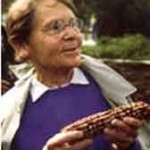 Barbara McClintock:
Barbara McClintock:
Barbara McClintock was born June 16, 1902 in Hartford, Connecticut. She was the third of four children. McClintock lived with an aunt and uncle in Brooklyn, New York in order to reduce the financial burden on her parents while her father established his medical practice. She was described as a solitary and independent child, and a tomboy. She was close to her father, but had a difficult relationship with her mother, tension that began when she was young.
Barbara wanted to attend Cornell University’s College of Agriculture. Her mother resisted, for fear that she would be unmarriageable. McClintock was almost prevented from starting college, but her father intervened just before registration began, and she began her studies at Cornell in 1919
During her graduate studies and postgraduate appointment as a botany instructor, McClintock was instrumental in assembling a group that studied the new field of cytogenetics in maize. McClintock’s cytogenetic research focused on developing ways to visualize and characterize maize chromosomes. This particular part of her work influenced a generation of students, as it was included in most textbooks.
In 1930, McClintock was the first person to describe the cross-shaped interaction of homologous chromosomes during meiosis. The following year, McClintock and Creighton observed how the recombination of chromosomes seen under a microscope correlated with new traits. Until this point, it had only been hypothesized that genetic recombination could occur during meiosis. McClintock published the first genetic map for maize in 1931, showing the order of three genes on maize chromosome. This information provided necessary data for the crossing-over study she published with Creighton.
Throughout the 1930’s, McClintock continued experiments at Cornell, at the California Institute of Technology, and then at the University of Missouri. She was elected Vice President of the Genetics Society of America in 1939, became a member of the National Academy of Sciences in 1944, and was President of the Genetics Society in 1945.
In 1945, she began a series of experiments that led her to transposition – which became the most important work of her career. At the time, most of her colleagues thought her work was too radical. McClintock began her career in the midst of a major revolution in biological thought. By the mid 1950’s molecular biology appeared to have solved the problem of life…and became a model of scientific explanation. In this world, McClintock’s work seemed idiosyncratic and odd. It was mostly dismissed and misunderstood.
It was 1953, when James Watson and Francis Crick were able to deduce how the DNA could perform the functions essential to genetic material … replication and instruction. They found that vital information is coded into DNA, and it came to be known as the ‘mother molecule of life’.
They painted a picture of DNA that was similar to the picture of the universe that the Newtonian physicists had drawn…highly mechanistic. Crick said that once information had passed into protein, it could not get out again … that information flowed only from DNA to RNA to Protein. Information originated in the DNA and it was not then subject to modification, according to Crick. This was continued by other geneticists, especially Monod and Jacob. And they used tools of biochemical assay.
But Barbara McClintock used the techniques more familiar to the naturalist. She observed the markings and patterns of coloration on the leaves and kernels of the corn plant … as well as the configurations of the chromosomes as they appeared under the microscope.
McClintock discovered that the loci on the chromosome – moved. In fact, this capacity to change position, transposition as she called it, was itself a property that could be controlled by regulator or activator genes. And her contemporaries tended to dismiss her research.. There was almost no one who would believe that the normal DNA of a cell could rearrange itself.
To most biologists in the 1950’s and 1960’s, transposition was a wild idea … and therefore not accepted. When she presented her research in 1951, 1953, and again in 1956, few listened and most could not understand or relate to what she was saying. She was considered obscure and even mad, even though she had a reputation as an impeccable investigator, prior to this.
It took 20 years after McClintock’s early research where she discovered transposition, for this discovery which confirmed her work … in a different field of study.
Public recognition and fame then intruded on years of obscurity and reserve … McClintock had been insulted and dismissed for a long time, yet she continued her work with maize throughout these 20 years. And in her work among many fascinating discoveries, she observed that the genes receive information from the cell, other chromosomes … and from unknown places, including the environment.
McClintock described how she described her approach of ‘having a feeling for the organism’. “Organisms can do everything that we do and they do it better, more efficiently, more marvelously…There’s no such thing as a central dogma into which everything will fit….So if the material tells you, ‘it may be this’, allow that. Don’t call it an exception, an aberration, a contaminant… That’s what’s happened all the way along the line with so many good clues.”
In 1979, she was awarded two honorary degrees at Rockefeller University and at Harvard. She received the first MacArthur Laureate Award in 1981, with a lifetime fellowship of $60,000 a year. Many other awards followed.
She received the Nobel Prize for Physiology or Medicine in 1983, and was the first woman to win that prize unshared.
She remained a regular presence in the Cold Spring Harbor community, and gave talks on mobile genetic elements and the history of genetics research for the benefit of junior scientists. An anthology of her 43 publications The Discovery and Characterization of Transposable Elements: The Collected Papers of Barbara McClintock was published in 1987 .
McClintock believed that the scientist has to have a feeling for the organism, which they are studying. She said,” As I see it, we are in the midst of a major revolution that will reorganize the way we look at this, the way we do research. And I can’t wait. Because I think it’s going to be marvelous, simply marvelous. We’re going to have a completely new realization of the relationship of things to each other.”
McClintock died of natural causes in Huntington, New York, on September 2, 1992 at the age of 90; she never married or had children. She believed in the mystery of the union and oneness of all things.
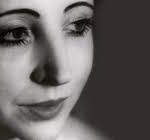 Anais Nin
Anais Nin
[February 21, 1903 – January 14, 1977]
Anais Nin was known for her journals, and her courage to live life as fully as she could, to express the full range and depth of emotion, and to continually pursue truth. She reveals her soul in her writings.
In her letter to Leo Lerman, editor at Harper’s Bazaar, she reveals more about who she is, than any biography could. Some of her quotes are included below, and a link to Wikepedia is given for more details about her life.
“Dear Leo
[…]
I see myself and my life each day differently. What can I say.The facts lie. I have been Don Quixote, always creating a world of my own. I am all the women in the novels, yet still another not in the novels. It took me more than sixty diary volumes until now to tell about my life. Like Oscar Wilde I put only my art into my work and my genius into my life. My life is not possible to tell. I change every day, change my patterns, my concepts, my interpretations. I am a series of moods and sensations. I play a thousand roles. I weep when I find others play them for me. My real self is unknown. My work is merely an essence of this vast and deep adventure. I create a myth and a legend, a lie, a fairy tale, a magical world, and one that collapses every day and makes me feel like going the way of Virginia Woolf. I have tried to be not neurotic, not romantic, not destructive, but may be all of these in disguises.
It is impossible to make my portrait because of my mobility. I am not photogenic because of my mobility. Peace, serenity, and integration are unknown to me. My familiar climate is anxiety. I write as I breathe, naturally, flowingly, spontaneously, out of an overflow, not as a substitute for life. I am more interested in human beings than in writing, more interested in lovemaking than in writing, more interested in living than in writing. More interested in becoming a work of art than in creating one. I am more interesting than what I write. I am gifted in relationship above all things. I have no confidence in myself and great confidence in others. I need love more than food. I stumble and make errors, and often want to die. When I look most transparent is probably when I have just come out of the fire. I walk into the fire always, and come out more alive. All of which is not for Harper’s Bazaar.
I think life tragic, not comic, because I have no detachment. I have been guilty of idealization, guilty of everything except detachment. I am guilty of fabricating a world in which I can live and invite others to live in, but outside of that I cannot breathe. I am guilty of too serious, too grave living, but never of shallow living. I have lived in the depths. My first tragedy sent me to the bottom of the sea; I live in a submarine, and hardly ever come to the surface. I love costumes, the foam of aesthetics, noblesse oblige, and poetic writers. At fifteen I wanted to be Joan of Arc, and later, Don Quixote. I never awakened from my familiarity with mirages, and I will end probably in an opium den. None of that is suitable forHarper’s Bazaar.
I am apparently gentle, unstable, and full of pretenses. I will die a poet killed by the nonpoets, will renounce no dream, resign myself to no ugliness, accept nothing of the world but the one I made myself. I wrote, lived, loved like Don Quixote, and on the day of my death I will say: ‘Excuse me, it was all a dream,’ and by that time I may have found one who will say: ‘Not at all, it was true, absolutely true.’”
More quotes:
“There are so many joys, but I have only known the ones that come like a miracle, touching everything with light.”
“Where the myth fails, human love begins. Then we love a human being, not our dream, but a human being with flaws.
“Ordinary life does not interest me. I seek only the high moments. … I want to be a writer who reminds others that these moments exist.”
Her diaries give insights on love, literature, and human nature. She writes about the meaning of life, how our objects define us, how deep emotional expression is essential to creativity, and how inviting the unknown is so important to living life with depth and richness.
An excellent website/blog called Brainpickings has more about the writings of Anais Nin: https://mail.google.com/mail/u/0/#inbox/14416c08a717ab26
For more details of her biography, go to: http://en.wikipedia.org/wiki/Ana%C3%AFs_Nin
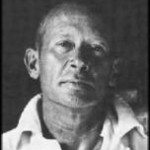 e.e.cummings
e.e.cummings
[October 14, 1894 – September 3, 1962]
Cummings is, in his general outlook on life, an unabashed romantic. He affirms life wholeheartedly in all its multiplicity, but especially in whatever is simple, natural, loving, individual, unique. Above all, he emphasizes feeling and emotion rather than thought or analysis. He rejects those social forces in life that hinder the unique and individual expression of each person’s essential being. He is particularly hostile to forces that promote conformity, group behavior, imitation, artificiality. He regards technology and the complexities of civilization as dehumanizing. Above all, he abominates war, which he looks upon as the ultimate negation of human values.
Although Cummings maintains the same general views throughout his life, he is more affirmatively exuberant in his early career and more lightheartedly iconoclastic. In his later career, he is more serene in his response to the basic good things of life and to the beauties of the natural world, but more harshly satiric in his denunciation of what he opposes.
Cummings’s play with language, punctuation, capitalization, and his visually directive placement of words on the page are congruent with the new movement in the arts that began in the 1900s in European painting–the movement toward “break up and restructuring” that was part of the revolt against realism in modern art.
http://college.cengage.com/english/heath/syllabuild/iguide/cummings.html
For more detailed biography:
http://www.poets.org/poet.php/prmPID/156
http://en.wikipedia.org/wiki/E._E._Cummings
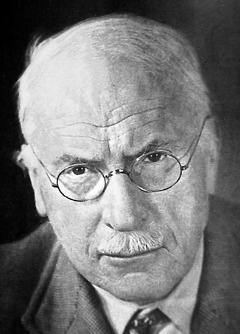 Carl Jung
Carl Jung
http://en.wikipedia.org/wiki/Carl_Jung
Paulo Freire:
http://www.encyclopedia.com/topic/Paulo_Freire.aspx
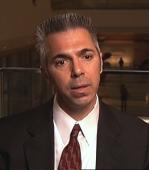 Robert Lanza, M.D.:
Robert Lanza, M.D.:
http://www.robertlanzabiocentrism.com/who-is-robert-lanza/
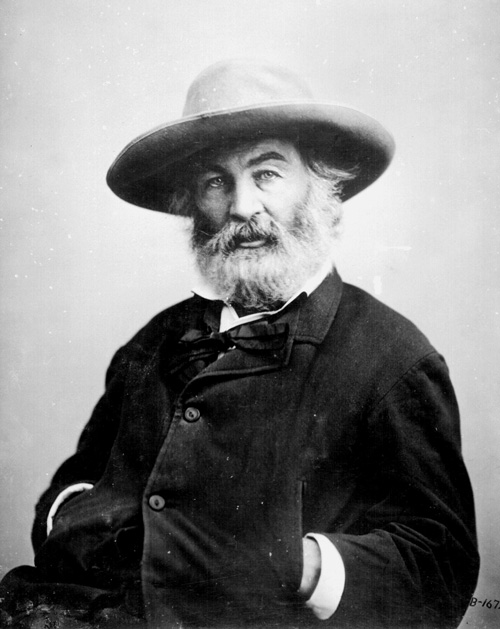 Walt Whitman:
Walt Whitman:
https://en.wikipedia.org/wiki/Walt_Whitman

